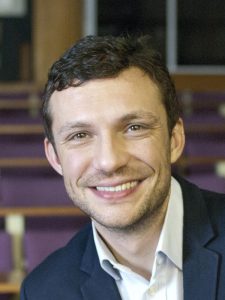Dr Danail Stoyanov
 UCL Lecturer in Computer Science
UCL Lecturer in Computer Science
UCL Technical Manager GIFT-Surg
Dan obtained a BEng degree from King’s College London in 2001 and a PhD degree from Imperial College London in 2006 where he continued with his post-doctoral research. In 2009, he was awarded a Royal Academy of Engineering/EPSRC Research Fellowship which he held at the Hamlyn Centre for Robotic Surgery at Imperial College London and subsequently at the Centre for Medical Image Computing (CMIC) and the Department of Computer Science, University College London (UCL). Currently, he is a Lecturer in Computer Science at CMIC, UCL where he leads the Surgical Robot Vision Research Group. His main technical research interests are in surgical vision and the recovery of morphology and motion at the surgical site during minimally invasive robotic surgery using laparoscopic images. The clinical aims and applications of his research are in the improvement of surgical practice starting from the surgical training process and translating to building better surgical systems for control, imaging and navigation during robotic minimally invasive interventions. In GIFT-Surg Dr Stoyanov is coordinating the Scientific / Technical contributions from the University College London.
GIFT-Surg focus
The primary sensors for guiding current fetal interventions are cameras which observe inside the womb through fetoscopes and ultrasound probes imaging through the abdominal wall and the placenta.
The role of Dan’s team within the GIFT-Surg project is to develop the surgical vision algorithms processing fetoscopic images, in particular to recover the non-rigid structure and motion of the surgical site in real-time and track the position of the camera and the instruments.
This information is crucial for image guidance, for example by augmented reality overlay of ultrasound or preoperative models, where the co-registration of data needs frequent updates to align with the operating field.
For active intraoperative guidance using imaging modalities like photoacoustics and forward facing ultrasound, vision algorithms can provide information to enhance the field of view and resolve image integration times. Information from the surgical site is also crucial for informing the mechatronic control systems of instruments using real-time measurements to facilitate precise and repeatable instrument-tissue manipulation and compensation of physiological motion.
In addition to surgical vision and assisting the imaging and guidance systems of GIFT-Surg, his team is leading the technical developments around understanding and quantifying surgical skills and competence, clinical workflow and system ergonomics. It is their particular interest to see how such quantitative metrics change and evolve as GIFT-Surg technology matures and provides exciting new capabilities to the clinical team.
